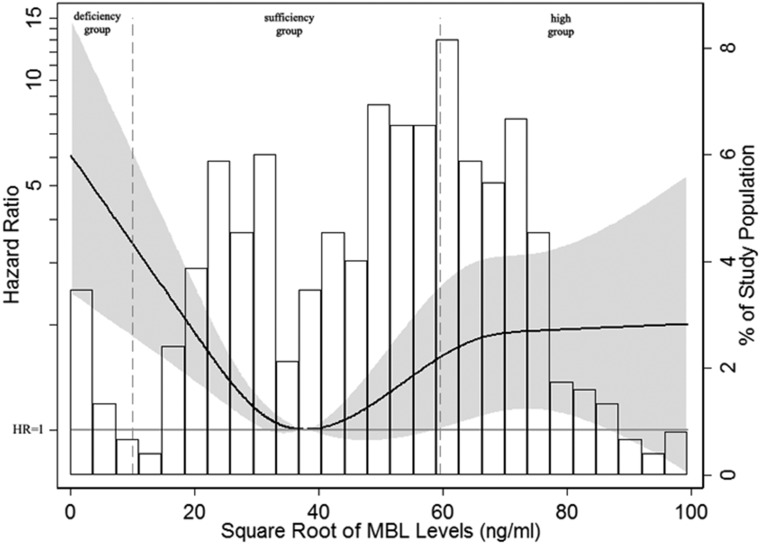Figure 1.
Nonlinear association between MBL levels and adjusted hazard ratios of 50% eGFR decline or ESRD in patients with IgAN. Four knots at the 10th, 25th, 75th, and 90th percentiles of MBL levels were used to model the association between MBL levels and composite end point, defined as a 50% eGFR decline or ESRD, using restricted cubic splines. The solid line represents the estimated hazard ratio, the shaded area represents the 95% confidence interval, and the histogram represents the distribution of the square root of MBL levels in patients with IgAN. Models were adjusted for age; sex; eGFR; proteinuria; hypertension; Oxford M (mesangial hypercellularity score), E (the presence of endocapillary proliferation), S (segmental glomerulosclerosis/adhesion), T (severity of tubular atrophy/ininterstitial fibrosis), and C (presence of crescent) scores; and corticosteroids/immunosuppressive therapy. Patients with MBL deficiency (MBL<100 ng/ml; square root of MBL levels <10 ng/ml) showed distinctly higher hazard ratios for the composite end point, whereas although patients with higher MBL levels (square root of MBL levels >59.50 ng/ml) tended to have a less favorable renal survival, the relationship was not statistically significant.

